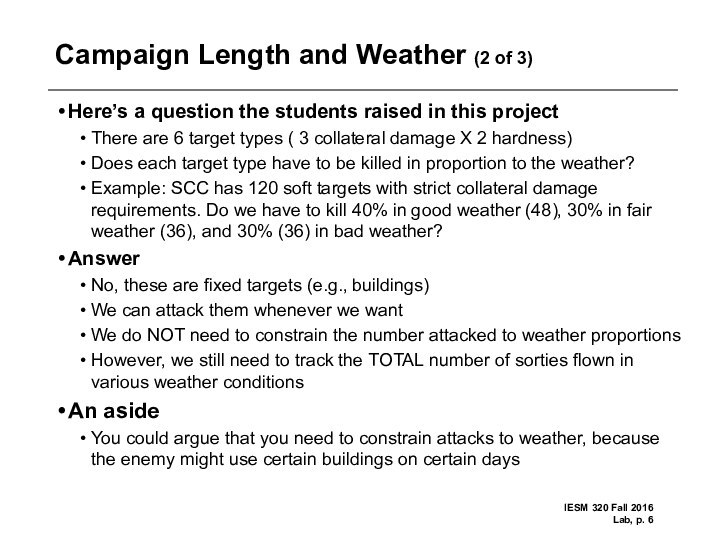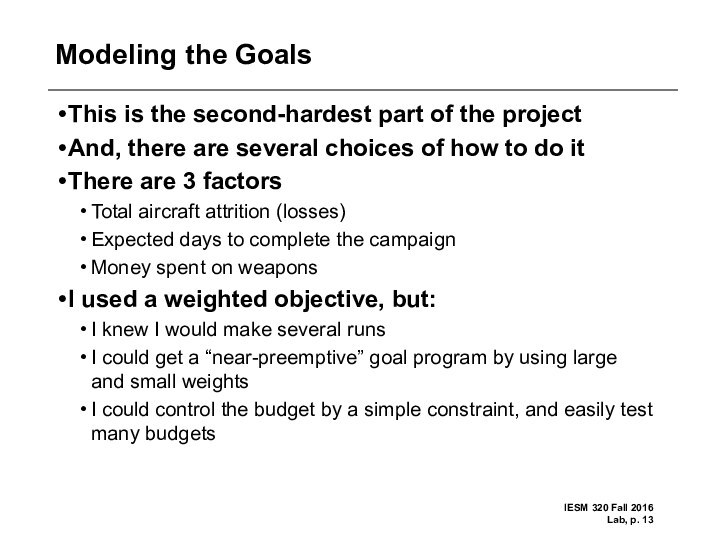are the objectives?
Minimize aircraft losses
Minimize the number of days
to kill the target setMeet investment limit (which is subject to discussion)
We will have to decide how to trade between these three objectives, so we have a goal program
What are the variables?
The number of weapons to buy
The assignment of weapons to targets in each scenario
The assignment of sorties (one aircraft flying to one target) in each scenario
We might need other variables too














![Lab Fall 2016 ConstraintsSUBJECT TO kills[e,c,h] WHERE (TGTS[e,c,h] > 0): { Kill constraints }](/img/tmb/15/1437228/ac972af4147ee64b51912b53f5536f89-720x.jpg)

































